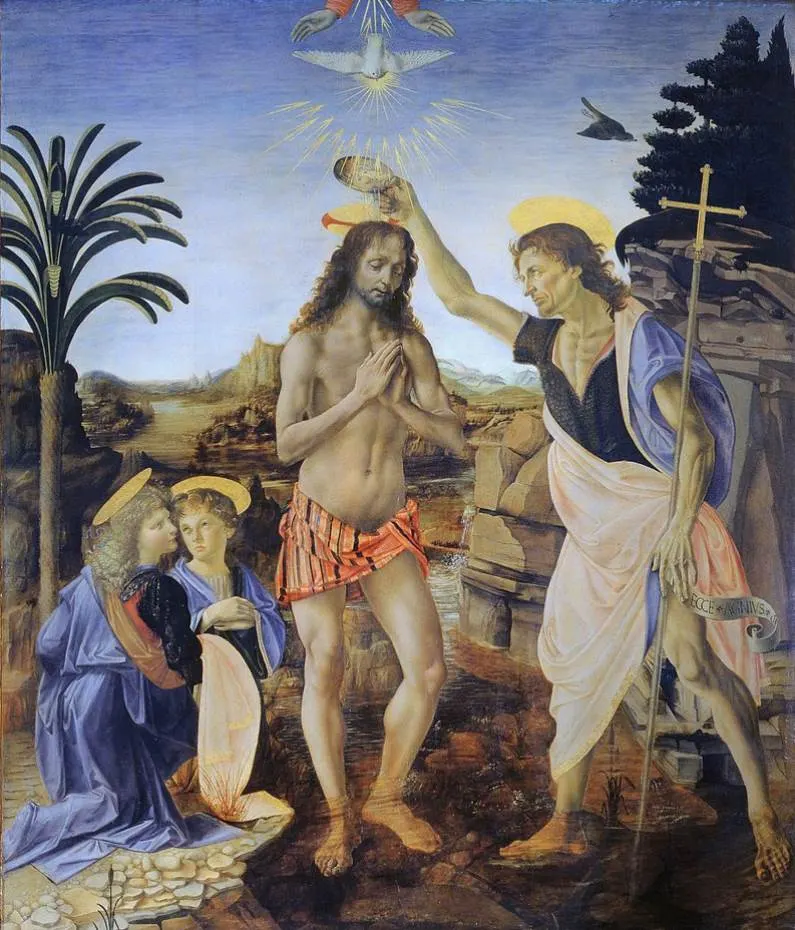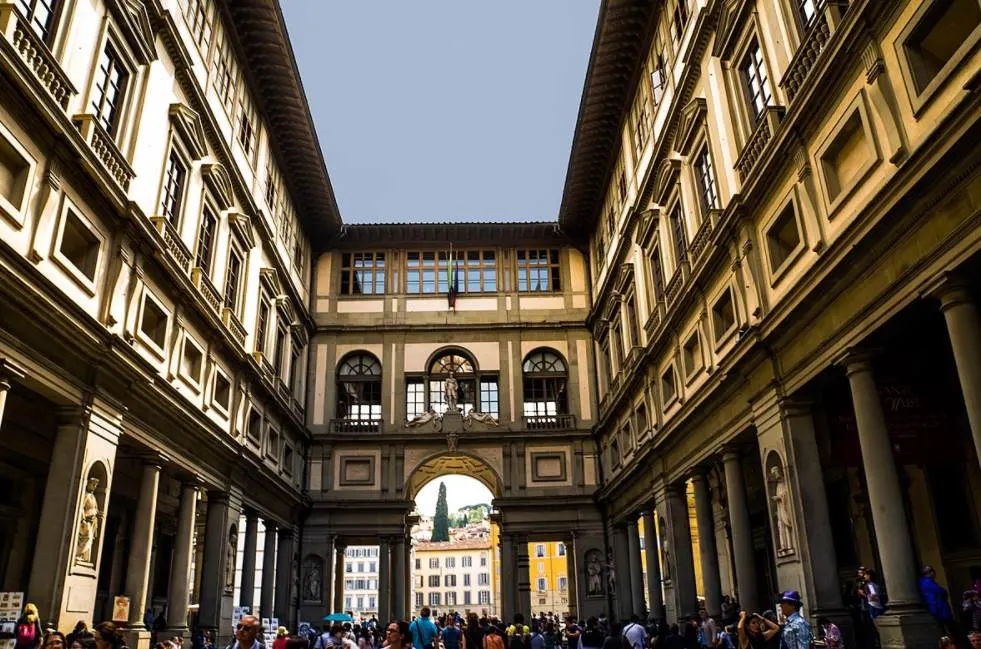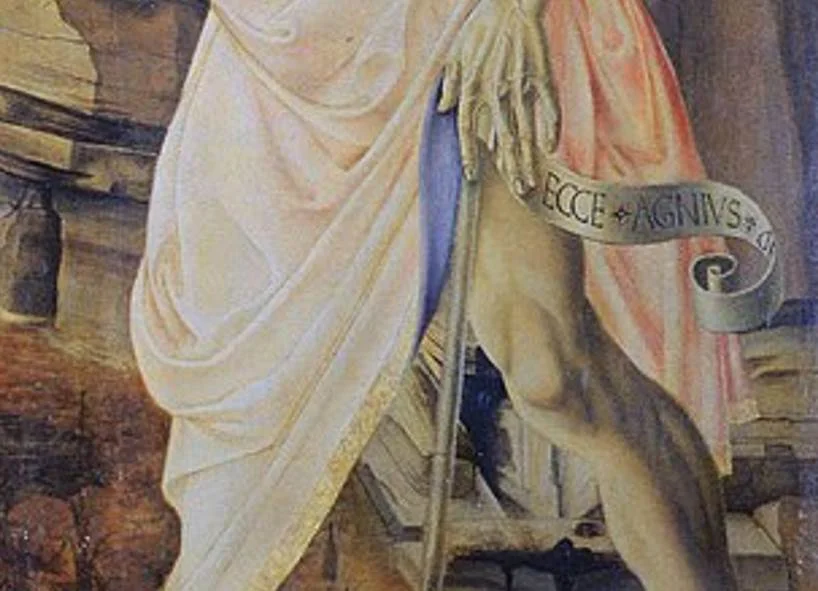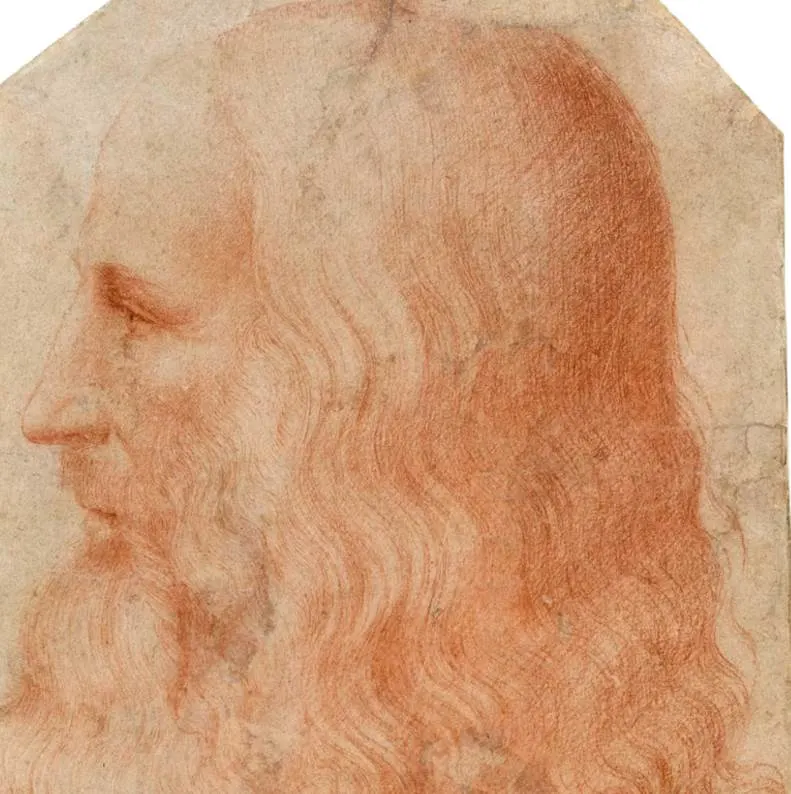It’s hard to deny that Leonardo da Vinci (1452-1519) is one of the most famous artists of the Renaissance, and possibly in the entire history of art as well.
What we often forget is that this man, who is often depicted as an aging bearded individual in the latter part of his life, was once an apprentice as well.
Let’s take a closer look at a painting called “The Baptism of Christ” by Leonardo da Vinci, a work he contributed to while he wasn’t considered to be a master yet.
1. It was painted while da Vinci was a pupil in a Florence workshop
Leonardo da Vinci was born on April 15, 1452, in the town of Vinci. This town was part of the Republic of Florence back then, and the young Leonardo eventually made it to Florence to join a prestigious workshop.
This was the workshop of Andrea del Verrocchio (1435-1488), a renowned artist himself most famously known for his abilities as a goldsmith and sculptor.
Verrocchio’s master was the great Renaissance sculptor Donatello (1386-1466), a man who passed away around the time that Leonardo became a studio boy at his master’s workshop.
By the age of 17, his talent became so obvious that he became a full-time apprentice at this studio.

2. It depicts a major event in he life of Jesus Christ
As the name of the painting implies, it depicts one of the most important moments in Christianity, the Baptism of Jesus Christ by John the Baptist.
This event happened on the banks of the Jordan River, a river in the Middle East with a length of 251 kilometers (151 miles) that flows through the Sea of Galilee.

The two men stand barefoot in the river and are joined by two angels, one of them is holding Jesus’ robe.
The symbolic elements of the painting are quite obvious and include:
- The hands of God appearing on top of the painting.
- The dove with rays of light represents the Holy Spirit.
- The palm tree is a symbol of salvation and life.
- John the Baptist is holding a staff which features a gold cross on top.

3. Most of the painting was completed by Leonardo’s master
The way things worked at the workshop of Andrea del Verrocchio is that the master started painting the main elements of the work, and it was completed by his students.
This means that large parts of the painting are not of the hand of Leonardo but Verrocchio himself. It’s also assumed that his part of the painting was already completed by the year 1468.
The elements added by da Vinci, who completed the painting between 1472 and 1475, are the angel directly next to Jesus Christ, and most probably the landscape in the background as well.
When we take a closer look at the angels, it becomes instantly clear that da Vinci was already a master at using lighting. The other angel along with the figures of Christ and John the Baptist look rather dull in comparison.

4. Two types of materials were used to complete the work
The standard medium to paint during the early part of the Renaissance was tempera on a wooden panel. The Dutch and Flemish painters from the northern parts of Europe, however, introduced oil as a medium to create masterpieces.
This was at around the same time that this painting was completed in the 1460s and 1470s. What’s remarkable about this painting is that Andrea del Verrochio started the work using tempera, but Leonardo da Vinci finished it using oil.
This also means that we can be pretty sure about the fact that Leonardo painted both the angel and the landscape in the background. That’s because these elements of the painting were completed in oil, while the rest of the painting was in tempera.

5. The painting is on display in a famous museum in Florence
The painting was originally commissioned in 1468 by the brother of Verrocchio, a man named “Don Simeone.” It was intended to be an altarpiece for the San Salvi church in Florence.
The original church was constructed in the 11th century but was partially destroyed during the Siege of Florence in 1529. It was, however, rebuilt in its original style shortly after this event.
The painting was moved to another location, though, and finally ended up in the collection of the “Galleria dell’Accademia” in Florence in the year 1810.
From here, it was moved to the Uffizi Gallery in Florence in the year 1959. Today, it’s still on public display in one of the most renowned art museums in the world.

More interesting facts about The baptism of Christ by da Vinci
6. It’s not exactly the smallest painting in the oeuvre of da Vinci. The fact that it was intended to become an altarpiece required it to be quite big as well.
The painting has dimensions of 177 × 151 centimeters (70 × 59 inches).
7. A scroll is emerging from the hand of John the Baptist that features an inscription saying “ECCE AGNUS DEI QUI TOLLIT PECCATA MUNDI.”
This literally translates to “Behold the Lamb of God which taketh away the sin of the world.” This is a passage in the Bible from John 1:29.

8. 16th-century art historian Giorgio Vasari (1511-1574) didn’t know both artists but still wrote extensively about them in his work “Lives of the Most Excellent Painters, Sculptors, and Architects.”
In this series of artist biographies, he makes a remarkable comment regarding this painting. He claims that Verrocchio was so impressed by the level of talent displayed by a young Leonardo following his completion of the angel that he never painted again.
Even though this claim can’t be verified, there might be some truth to it. The final painting attributed to him was “Virgin and Child with Two Angels” (1467-1469), a work that was completed by another student of his named Lorenzo di Credi.
This little anecdote clearly emphasizes what kind of a genius that Leonardo da Vinci really was.

